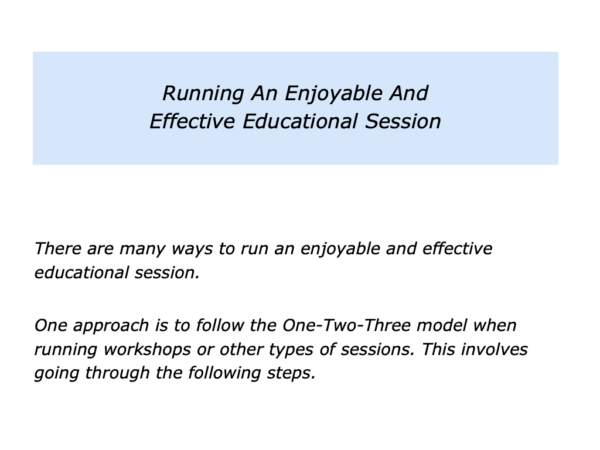
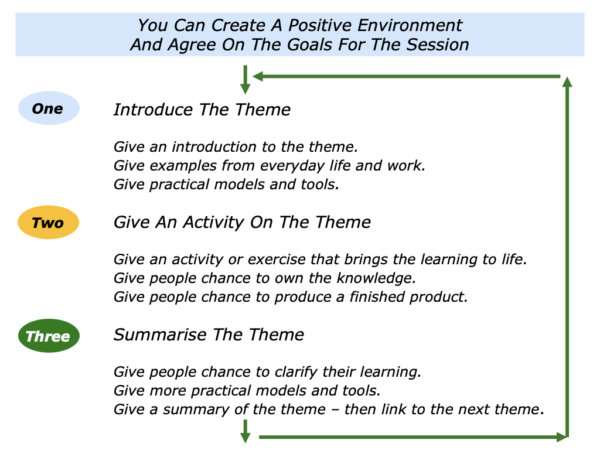
There are many ways to help people to learn. One approach is to use the One-Two-Three model for running an educational session. This is a basic model but it can be both enjoyable and effective. Let’s explore how it works in action.
Imagine you have been asked to run a seminar on great leadership. This will involve learning passing on knowledge and practical tools that people can use in their own ways.
You will obviously prepare properly before the session. One approach is to settle on the themes you want to cover. You may, for example, want to focus on the following themes.
Great leaders
Giving an introduction to what great leaders do right and bring this to life with relevant examples.
Great leadership in
people’s own experiences
Giving activities or exercises that involve people learning from their own experiences of great leadership.
Great leadership in action
Giving people positive models and practical tools that they can use to apply the ideas their own work.
Imagine that you have clarified the themes you want to cover. You may then focus on how to bring these to life in the session. One approach is to ask yourself the following questions.
What are the specific things that people may want to learn? How can I help them to learn these things in an enjoyable and effective way? When do I want to cover the various themes during the session?
Collecting these ideas together, you can clarify the map for the session. If appropriate, you can take time to reflect before settling on the plan for running a successful session.
The Actual Session
Imagine that you have prepared properly. Moving on to the session, you can create a positive environment in which people feel able to explore. It will then be important to clarify the goals for the session. One approach is:
To outline the themes you will cover and ask people if they want to add any other topics to the agenda;
To agree on the themes to cover and the goals for the session – such as people taking away tools they can use as leaders in their daily work;
To make clear contracts about your role – such as to provide practical tools that work – and the participants’ roles in the session.
The next step may be to follow the One-Two-Three model for running the session. You will, of course, apply this in your way.
You Can Introduce
The First Theme
Give an introduction to the first theme. It can be useful to give specific examples that relate to people’s daily work. If appropriate, you may want:
To invite people to identify what they think great leaders do right;
To give them an overview of models about great leadership;
To begin to pass on practical tools they can use to as leaders in their own work.
Good educators keep moving from the concept to the concrete. Bearing this in mind, it will be important to give examples that bring the learning to life and resonate with people.
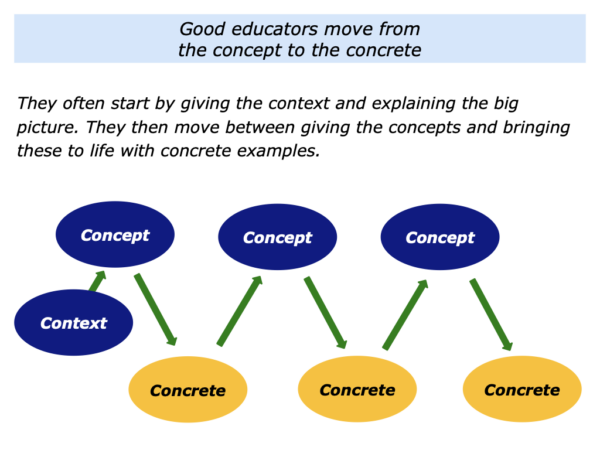
Imagine that you have gone through these stages. You may then want to move on to the next step.
You Can Give An
Activity On The Theme
Good educators recognise that people want own the knowledge. Bearing this in mind, they often follow the Three I model – Inspiration, Implementation, Integration.
They create an inspiring environment and provide implementation tools that work. They then help people to integrate the learning into their lives and work.
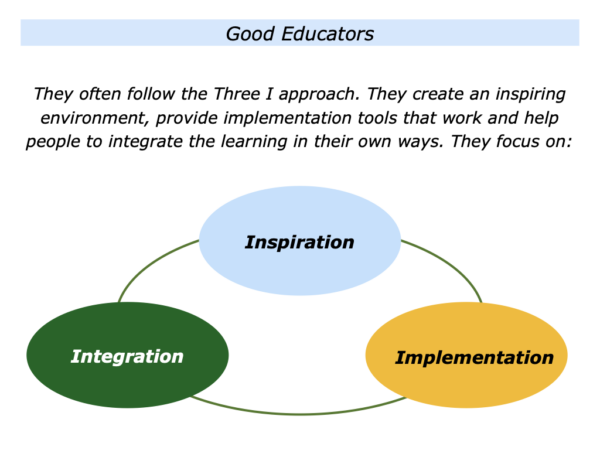
You may want to follow elements of this approach in your own way during the session. One way can be to invite people to do an activity that is relevant to the first theme.
This may involve some learning by doing, such as an exercise or other learning experience related to their work. Make sure it is relevant and provides real take away value.
People obviously learn in different ways, so use different media. These might include giving input, using flip charts, visuals and giving the participants chance to clarify their own experiences.
When giving people group work, make sure they must produce a finished product – such as a presentation. This also gives them chance to pass on their ideas. Then move onto the next step.
You Can Summarise The Theme
And Link To The Next Theme
Summarise the key points that have emerged for exploring the first theme. If appropriate, you can give more input such as passing on knowledge, giving positive models and providing practical tools.
You can again show how these ideas can be applied in people’s work. Keep moving from the concept to the concrete. Answer any questions and conclude your input on the first theme. Then link to the next theme.
You can repeat the One-Two-Three Model until you have covered all the themes. Finish the session by inviting people to clarify what they have learned or relearned. One approach is to give them the following exercise.
My Learning
The specific things I have learned
– or relearned – today have been:
*
*
*
If appropriate, ask people to share these points, either in pairs or with the whole group. This helps to develop a feeling of success and also provides people with further ideas they may want to use in their own ways.
Good educators believe in constant improvement. So after the session clarify what you did well and what you can do better next time. You can then continue to develop as an educator.
My Development
The specific things that went well in the session – and
how I can do more of these things in the future – were:
*
*
*
The specific things that I can do
better in the future – and how – are:
*
*
The One-Two-Three approach is a basic model. When employed properly, however, it can make the learning enjoyable and effective. This can help people to continue to learn and develop.
Let’s return to your own life and work. Looking ahead, can you think of a situation where you may want to follow elements of this approach? How can you do this in your own way?
If you wish, try tackling the exercise on this theme. This invites you to complete the following sentences.
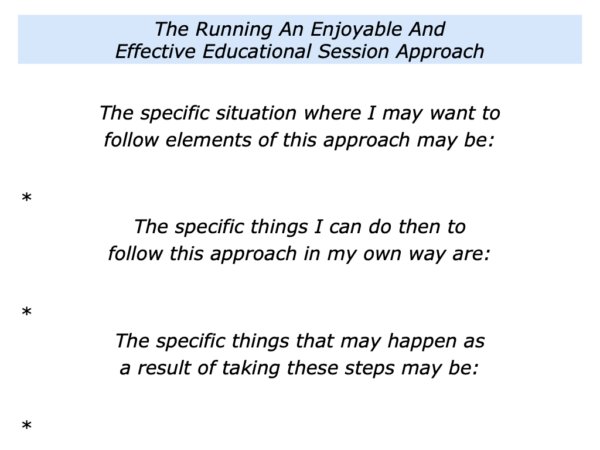






Leave a Reply